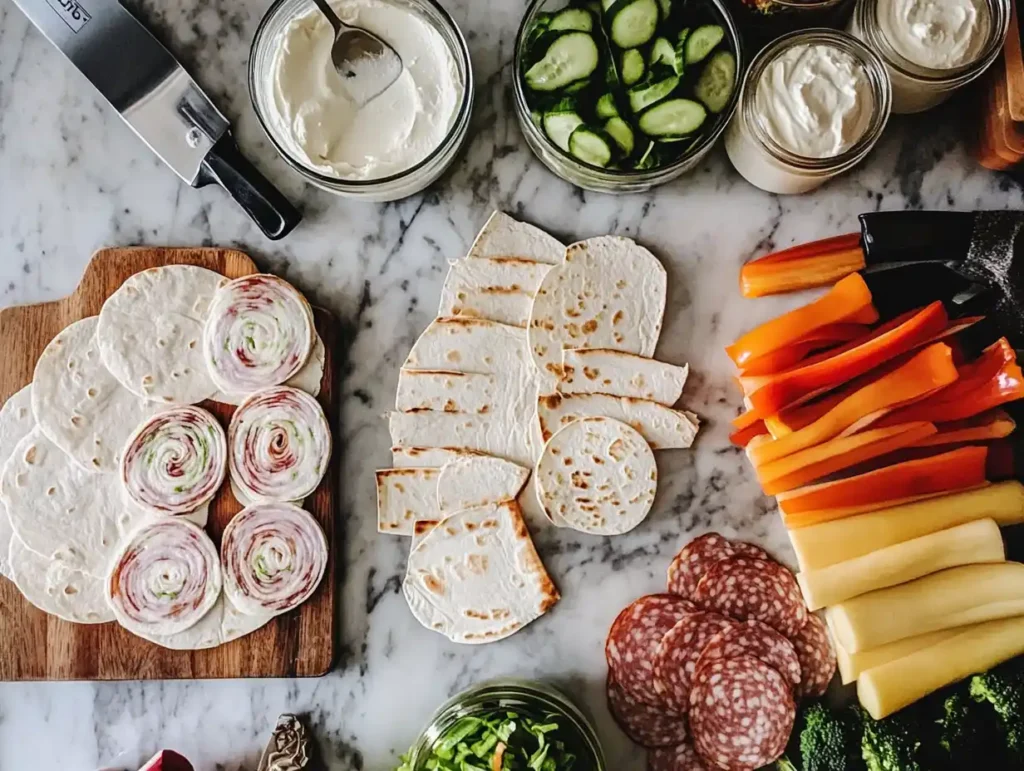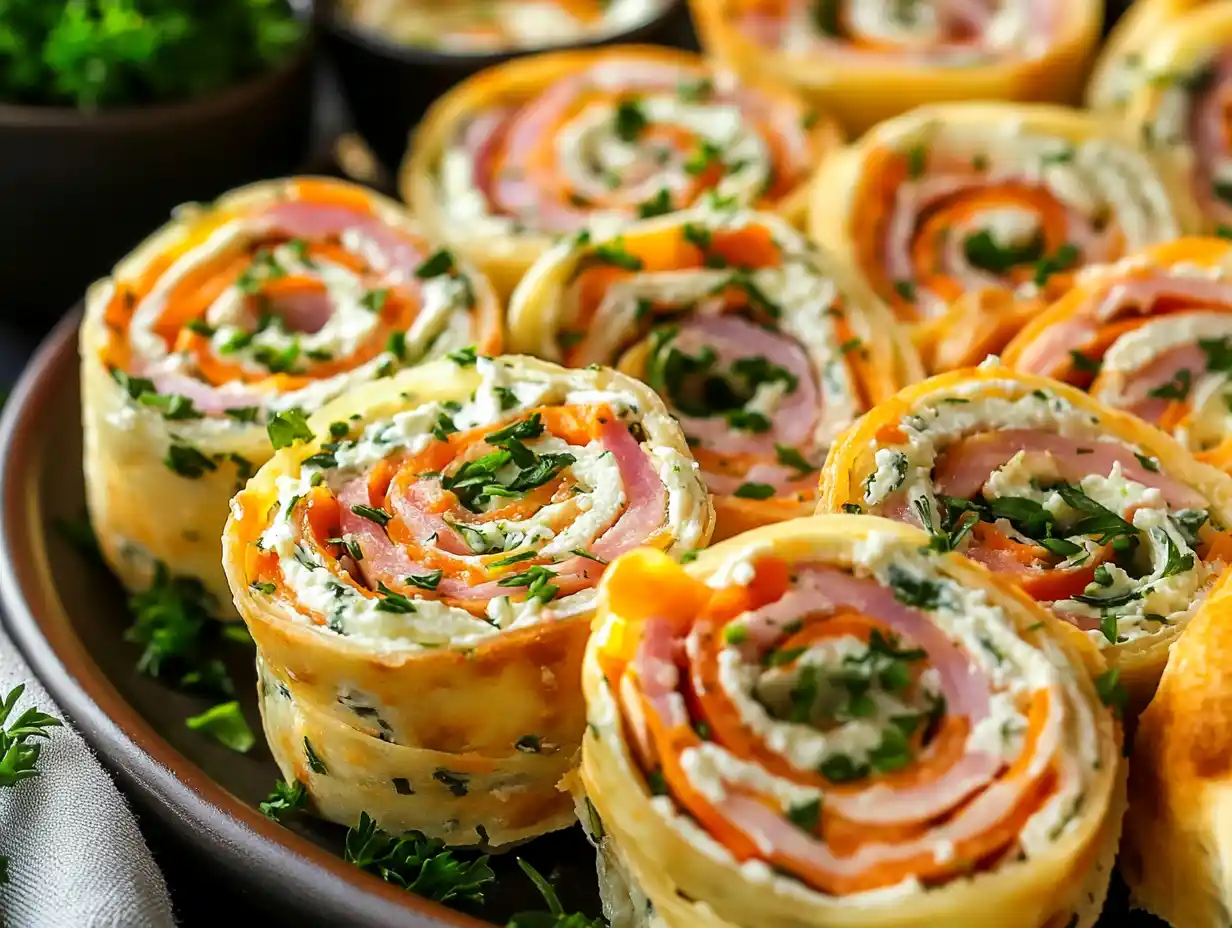Introduction
Pinwheels are a delightful and versatile addition to any gathering, whether they’re savory tortilla wraps or decorative paper crafts. However, one common challenge people face is figuring out how to get pinwheels to stay together without falling apart.
Whether you’re preparing appetizers for a party or decorative pinwheels for an event, keeping them intact requires the right materials, techniques, and assembly methods. From using binding spreads in food pinwheels to securing brads and glue in craft pinwheels, proper preparation ensures your creations look great and function as intended.
In this guide, we’ll explore why pinwheels fall apart, step-by-step techniques for assembling sturdy pinwheels, and practical tips for preventing common issues. By the end, you’ll have all the tools and knowledge to create pinwheels that are as beautiful as they are durable.
What Are Pinwheels?
Definition and Purpose of Pinwheels
Pinwheels are rolled or folded shapes used in both culinary presentations and decorative crafts. In food, they’re often made with tortillas, deli meats, cheese, and spreads, cut into bite-sized rolls for appetizers or snacks. In crafts, pinwheels are created from colorful paper or fabric, folded to form spinning designs used for decorations, toys, or displays.
Popular Types of Pinwheels (Food and Craft Variations)
- Food Pinwheels – Made from flatbreads, tortillas, or puff pastry, filled with spreads, meats, vegetables, or cheeses, and sliced into compact spirals.
- Craft Pinwheels – Often folded from decorative paper or cardstock, attached to sticks, and used as party decorations or outdoor ornaments.
- Fabric Pinwheels – Sewn or glued together for quilts, embellishments, or accessories.
While their purposes differ, both types of pinwheels rely on secure assembly techniques to maintain their shape and functionality.
Common Reasons Pinwheels Fall Apart
Loose Wrapping Techniques
One of the main reasons pinwheels fall apart is loose rolling. In food pinwheels, not rolling tightly enough leaves gaps, making them unravel when sliced. Similarly, in craft pinwheels, poor folds or misaligned centers lead to instability.
Overfilling or Uneven Distribution of Ingredients
For food pinwheels, overstuffing with fillings can cause ingredients to spill out or prevent the dough or tortillas from sealing properly. Uneven filling also affects balance, resulting in tears or loose rolls.
Lack of Proper Binding Agents or Adhesives
Food pinwheels often rely on spreads like cream cheese, hummus, or mayonnaise to act as edible glue and hold ingredients together. Without these, the layers separate easily. For craft pinwheels, using weak glue or poor-quality brads can lead to structural failure.
Materials and Ingredients for Secure Pinwheels

Food Pinwheels: Essential Ingredients for Stability
To create food pinwheels that stay intact, the right ingredients make all the difference. Start with:
- Tortillas or Flatbreads – Use soft, pliable tortillas that won’t crack or tear when rolled. Whole wheat or spinach wraps are great options for added flexibility.
- Spreads – Ingredients like cream cheese, hummus, ranch dressing, or guacamole act as edible glue, helping layers stick together.
- Fillings – Use thinly sliced meats (like ham or turkey) and soft cheeses for even layering. Avoid large chunks that can create gaps.
- Vegetables – Add thinly sliced lettuce, cucumbers, or bell peppers to enhance flavor without adding bulk.
Craft Pinwheels: Tools and Materials for Assembly
For decorative pinwheels, sturdy materials are essential. You’ll need:
- Cardstock or Scrapbook Paper – Use double-sided decorative paper to make vibrant, sturdy pinwheels.
- Brads or Push Pins – These serve as pivots to keep the folds secure and functional.
- Glue or Tape – Use hot glue guns for durability and double-sided tape for lightweight designs.
- Wooden Sticks or Straws – Attach pinwheels to sticks or dowels to display them upright.
Additional Support Accessories
- Food Pinwheels – Use toothpicks to secure rolls temporarily before slicing.
- Craft Pinwheels – Reinforce corners with tape reinforcements or hole punch protectors for added durability.
How to Assemble Food Pinwheels That Stay Together

Step-by-Step Instructions for Wrapping and Rolling Food Pinwheels
- Spread the Base – Lay the tortilla flat and spread a thin, even layer of adhesive spread (cream cheese, hummus, or mustard) to seal the edges later.
- Layer Fillings Strategically – Add meat, cheese, and vegetables in thin layers, leaving about 1/2 inch of space around the edges to prevent overstuffing.
- Roll Tightly – Begin rolling from one end, applying gentle pressure to keep the roll firm without tearing the tortilla.
- Seal the Edge – Use an extra dab of spread along the edge to act as glue and keep the roll closed.
- Chill Before Slicing – Wrap the roll in plastic wrap and refrigerate for 30 minutes. This helps set the shape and prevents unraveling during slicing.
- Slice with Precision – Use a sharp knife to cut even slices, about 1 inch thick, and clean the blade between cuts to keep edges clean.
Tips for Tight Rolling and Cutting Without Unraveling
- Press Firmly as You Roll – Apply even pressure without squeezing out the fillings.
- Chill Before Slicing – Cooling stiffens the ingredients, making cutting easier and cleaner.
- Use a Serrated Knife – Serrated blades reduce tearing and allow clean cuts without pressing the roll flat.
Using Cream Cheese, Spreads, or Sauces as Adhesives
Spreads act as the binding glue for food pinwheels. Cream cheese is especially effective because it’s thick, sticky, and holds ingredients in place. Hummus and guacamole are also great alternatives for flavor and texture. For sweeter pinwheels, peanut butter or Nutella can provide a similar binding effect.
Techniques to Secure Craft Pinwheels
Step-by-Step Assembly for Paper or Decorative Pinwheels
Creating decorative pinwheels that stay together requires careful folding and assembly. Follow these steps for a sturdy design:
- Cut the Paper – Start with a square piece of cardstock (typically 6×6 inches or larger).
- Draw Diagonal Lines – Use a ruler to draw diagonal lines from each corner, meeting at the center.
- Cut Along the Lines – Stop about 1 inch from the center point to avoid cutting through the paper entirely.
- Fold the Corners – Fold every other corner toward the center, forming the pinwheel’s shape.
- Secure with a Brad or Push Pin – Insert a brad or push pin through the folded corners and into the center point.
- Attach to a Stick – Push the pin through a wooden dowel or straw, leaving enough slack for the pinwheel to spin freely.
Reinforcing Pinwheel Centers with Brads or Pins
For added security, make sure the brad is tight but flexible, allowing the pinwheel to spin without falling apart. Use hot glue to reinforce the back side of the brad if needed. If you’re making a decorative pinwheel that doesn’t spin, you can seal the center completely with glue for added stability.
Ensuring Balanced Folding for Symmetry and Stability
Symmetry is key for craft pinwheels. When folding, double-check that each fold lines up evenly. Uneven folds can throw off balance, causing the pinwheel to look lopsided or fail to spin. Use a ruler or stencil for accurate measurements.
Troubleshooting Pinwheel Problems
How to Fix Loose or Unstable Food Pinwheels?
If food pinwheels feel loose, try these quick fixes:
- Re-wrap Tightly – Unroll and re-wrap, applying more pressure during rolling.
- Add More Spread – Use an extra layer of spread along the edge to seal the roll securely.
- Refrigerate Before Cutting – Chill for at least 30 minutes to set the shape before slicing.
How to Repair Damaged Craft Pinwheels?
For craft pinwheels, fix broken pieces by reinforcing weak folds with double-sided tape or hot glue. If the brad or pin comes loose, replace it with a stronger fastener or reinforce it with adhesive.
Preventing Pinwheel Designs from Falling Apart During Use
To prevent decorative pinwheels from falling apart:
- Use thicker paper or cardstock for durability.
- Avoid placing pinwheels in high winds if used outdoors.
- Store pinwheels in protective boxes to avoid bending or tearing.
Creative Ideas for Pinwheel Displays and Storage
Serving Suggestions for Food Pinwheels
Food pinwheels are perfect for parties, picnics, or casual gatherings. To make your presentation eye-catching, try these ideas:
- Layered Platter Arrangement – Arrange pinwheels in circular patterns or rows on a platter. Add garnishes like parsley, cherry tomatoes, or olives for extra color.
- Skewered Pinwheels – Insert toothpicks or cocktail sticks into each pinwheel for easy serving and handling. This also helps them stay intact during presentation.
- Dip Pairing – Serve pinwheels with small bowls of ranch dressing, marinara sauce, or guacamole to complement the flavors.
- Individual Serving Cups – Place pinwheels in decorative cupcake liners for portioned servings at events.
Decorative Display Ideas for Craft Pinwheels
Craft pinwheels can brighten up any celebration or event. Here are a few creative ways to display them:
- Table Centerpieces – Arrange pinwheels in vases or jars filled with sand, beads, or pebbles. Use multiple sizes for a layered effect.
- Garden or Yard Decorations – Attach pinwheels to sticks or poles and place them in planters, flower beds, or along walkways.
- Wall Decor – Hang pinwheels on strings or attach them to a backdrop for themed parties or photo booths.
- Gift Toppers – Use mini pinwheels as gift embellishments or attach them to cards for added charm.
Storage and Transportation Tips to Keep Pinwheels Intact
Proper storage ensures pinwheels stay fresh and intact:
Food Pinwheels:
- Refrigeration – Store pinwheels in an airtight container and separate layers with parchment paper to prevent sticking.
- Freezing Option – For longer storage, freeze pinwheels in a sealed bag and thaw overnight in the fridge before serving.
- Transport Tips – Use a tight-fitting container to avoid movement during transport. Keep the container chilled if traveling long distances.
Craft Pinwheels:
- Flat Storage – Place pinwheels in a box with dividers to keep them from bending.
- Outdoor Storage – For reusable pinwheels, coat them with a weather-resistant spray to prevent damage from rain or sun.
- Transport Carefully – Use bubble wrap or tissue paper to cushion pinwheels during travel.
FAQs: How Do You Get Pinwheels to Stay Together?
How do you keep tortilla pinwheels from falling apart?
To prevent tortilla pinwheels from unraveling, use a spread like cream cheese or hummus as an adhesive base. Roll them tightly, seal the edge with extra spread, and chill before slicing to hold their shape.
What type of spread works best to hold pinwheels?
Cream cheese is one of the most effective spreads because of its thickness and stickiness. Other options include hummus, guacamole, ranch dressing, or mayonnaise for flavor and binding strength.
How can I secure craft pinwheels without glue?
If you don’t want to use glue, you can secure craft pinwheels using brads, push pins, or double-sided tape. These alternatives are clean, strong, and keep the design flexible if spinning is required.
What’s the best way to store pinwheels before serving?
Food pinwheels should be stored in the refrigerator in airtight containers for up to 3–4 days. For longer storage, freeze them individually wrapped and thaw as needed. Craft pinwheels can be stored in flat boxes with padding to prevent bending.
Can I make pinwheels ahead of time without losing shape?
Yes, you can make food pinwheels a day in advance. Wrap them tightly in plastic wrap and refrigerate until serving. For craft pinwheels, prepare them ahead and store them flat until you’re ready to display them.
How do you keep pinwheels from drying out?
To keep food pinwheels moist, wrap them in plastic wrap or store them in an airtight container. For longer storage, lightly dampen a paper towel and place it in the container to preserve moisture.
Conclusion
Creating pinwheels—whether for food platters or craft decorations—requires attention to detail to ensure they stay intact and look impressive. With the right techniques, such as using adhesive spreads, tight rolling, and proper sealing, food pinwheels can maintain their shape without falling apart. Similarly, brads, glue, and strong folds help keep craft pinwheels sturdy and beautiful for any occasion.
By following the step-by-step assembly methods, troubleshooting tips, and storage recommendations covered in this guide, you’ll be able to create pinwheels that are not only functional but also visually appealing.
So whether you’re preparing an appetizer tray or decorating for a party, you can now confidently keep your pinwheels secure and stunning from start to finish!
Looking for more delicious snack ideas? Try our pepperoni pinwheels for an easy and tasty treat. If you’re experimenting with dough, check out how to fold a pepperoni roll for step-by-step instructions. Need more inspiration? Discover charcuterie skewers to impress your guests with bite-sized delights!

